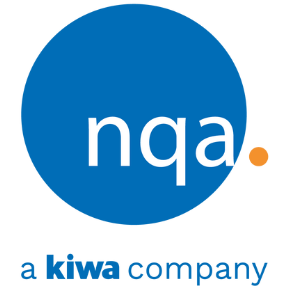Why you won’t need to train everyone when ISO 9001:2015 is issued
Since ISO 9001 was first published in 1987, there have been revisions in the years of 1994, 2000 and 2008. Currently scheduled for September, (some of) the World of “ISO” users eagerly awaits the 2015 revisions.
Throughout these changes, one question – above all the debates about the technical impact – is commonly heard:
“Will I Have To Train Everyone on the New Requirements?”
In this article we’re going to take a look at trying to define a simple and cost effective answer to that question.
“What’s Competency, Awareness and Training, Bob?”
The 6.2.2 requirement of ISO 9001:2008 gives a clue to answering the question above. Indeed, further clues are in the “sequence” of the words used in the title of the requirement. Let’s take the first one, competency.
ISO 9000, the vocabulary document is the place to look for definitions, since it’s the normative reference when using ISO 9001. Competency is described there as:
“the demonstrated ability to apply skills and knowledge”
In seeking the answer to the question of whether training in the new ISO 9001 revision is needed, the organization must ask itself if anyone needs to be able to demonstrate any skills or knowledge of the requirements.
Clearly, based on a review of the DIS 9001 content, some might. If the question becomes; does the general population of the organization need to apply the international standard’s requirements? The answer is a resounding “No”.
The organization’s workforce needs to have the (defined) knowledge and skills associated with their work – that of implementing the organization’s defined Quality Management System processes, controls, measuring, monitoring and so on. A select group of individuals will need to understand the nature of the deltas from 2008 to 2015 versions. That might simply come from reading and analyzing them – not “training”.
A parallel can be drawn from (the product manufacturing) industry itself. If the QMS is considered to be similar to a product design specification, the inputs to that design may change over time. A formal process of design changes is used and reviews carried out.
A trial build of the revised product may be planned and performed to prove the production processes. New methods of manufacture, inspection and test may be needed.
However, it’s unlikely that people need “training” in the new requirements. Typically, they possess the necessary competencies to deal with the design changes (on a case by case basis). The manufacturing operators are not likely to need to go through all the design aspects, how the changes were made etc. to be capable of dealing with them.
Similarly with the Quality Management System. A change to the format of ISO 9001 – the “Annex SL” isn’t of any consequence to anyone except one or two people. The various changes to the requirements may affect individual “Process Owners”, such that adjustments may have to be made to existing processes and associated documents.
One focus of the assumed need for training is the internal auditors. It’s a common myth that internal auditors will be expected to have, on file in their “training record”, a recently minted certificate proclaiming training to ISO 9001:2015.
Maybe it’s because trainers who offer auditor courses feel it’s important, but frankly, the competencies of the internal auditors shouldn’t extend to knowing the ISO standard backwards and forwards.
Once again, taking the analogy of the new product lifecycle, that’s akin to sending the QC folks to school on new product design (inputs). It’s never been necessary and it’s not going to be needed, any time soon. Their job is to verify the implementation of the QMS “as designed” and, to confirm compliance – not to “second guess” what ISO says and bring that to the attention of management.
“Not many people know that…”
This famous quote – attributed to actor Michael Caine – is so true in the World of Training. What’s often overlooked in many Quality Management Training procedures is that we adults can actually go through 4 stages with our learning; The stages are well known to many trainers but not to many of those outside the (professional) training industry. They are:
- Unconscious incompetence
- Conscious incompetence
- Conscious competence
- Unconscious competence
So, when determining what training may be needed, it’s worth defining competencies and then checking, first, what people can demonstrate. Don’t be fooled into thinking that people retain everything they were trained in, either.
These stages of learning are not concrete and over time, things change, which can have the effect of taking people who were previously thought to be “unconsciously competent”, back to the earlier, less competent, stage.
It’s been common to use the “grand parent” method which supposes that if you can do the job, you’re “good to go”. With an emphasis on risk, does your organization want to move ahead on the basis of “always doing what you always did”?
In another article, we’ll take a look at risk and opportunity as it applies to Quality Management Systems.
You will need to prepare for change and adapt your quality management system to meet the new requirements and transitional timelines, but don't worry this is a partnership and we will help you to understand the changes, interpret the new concepts and act on the implications.
